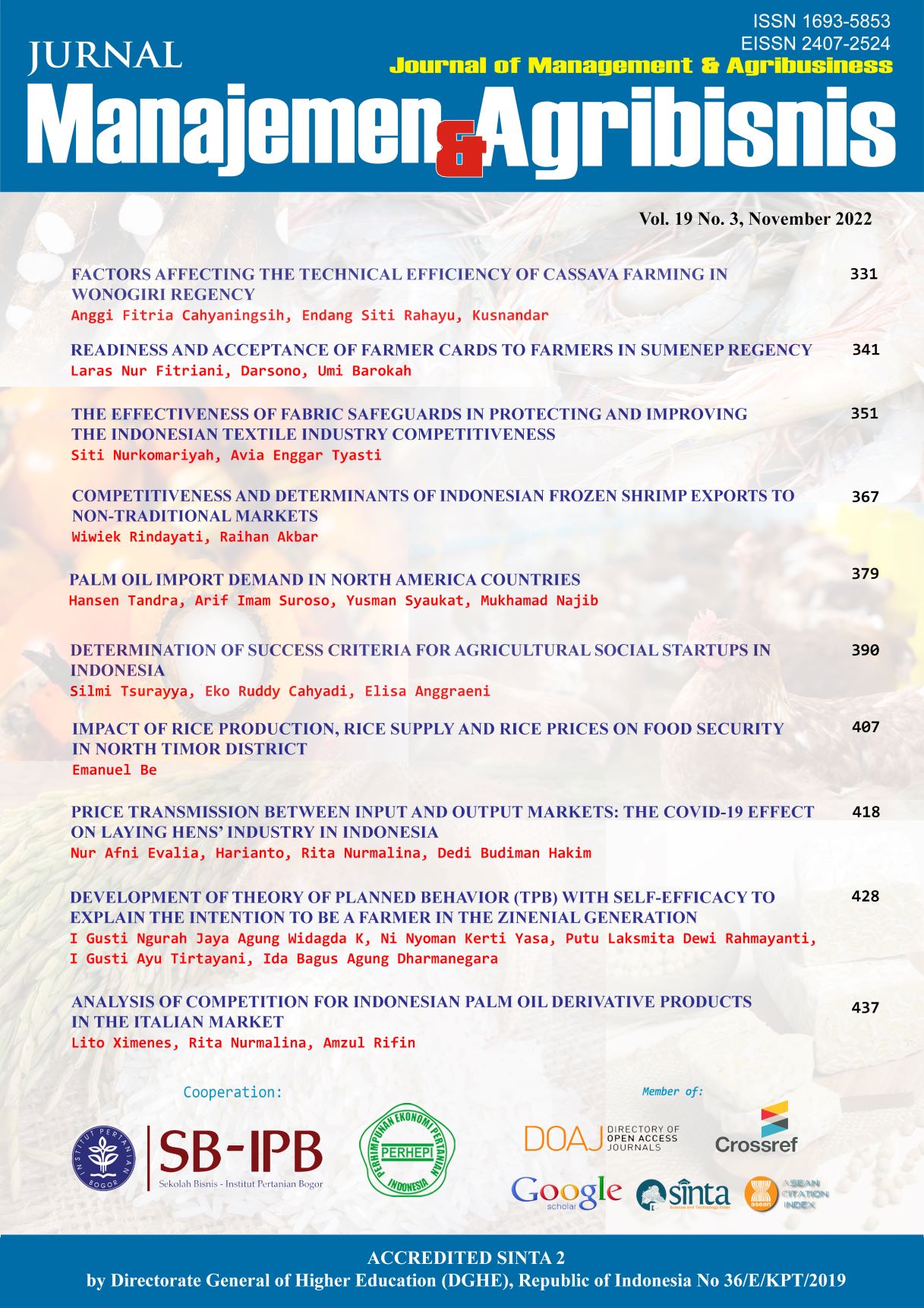A Strategy Map Model to Improve The Efficiency of Indonesian Banks
Abstract
This study approaches the problem of banking efficiency in an innovative way. It aims to identify workable solutions for enhancing the efficiency of Indonesian banks as something that is very important after this pandemic Covid-19 time. In order to build a strategy map model, the research is divided into four steps: (1) a desk study of best practices for enhancing banking efficiency; (2) a survey for choosing strategies; (3) a focus group discussion to identify relationships among strategies; and (4) an Analytic Network Process (ANP) modeling to prioritize and build a strategy map model. According to the Strategy Map, the following areas should be prioritized for efficiency improvement: Financial, Customer Value, Learning and Growth, and Internal Process. Indonesian bankers could allocate limited resources in ways that would boost the efficiency of the majority of banks based on the designed strategy map. Despite the fact that these strategy maps are not universal, the research shows that the suggested method is a practical and objective way to create more justified strategy maps.
Keywords: banking efficiency, bank performance, efficiency strategy, strategy map, ANP
Authors
Authors who publish with this journal agree to the following terms:
- Authors retain copyright and grant the journal right of first publication with the work simultaneously licensed under a Creative Commons Attribution License that allows others to share the work with an acknowledgement of the work's authorship and initial publication in this journal.
- Authors are able to enter into separate, additional contractual arrangements for the non-exclusive distribution of the journal's published version of the work (e.g., post it to an institutional repository or publish it in a book), with an acknowledgement of its initial publication in this journal.
- Authors are permitted and encouraged to post their work online (e.g., in institutional repositories or on their website) prior to and during the submission process, as it can lead to productive exchanges, as well as earlier and greater citation of published work (See The Effect of Open Access).

